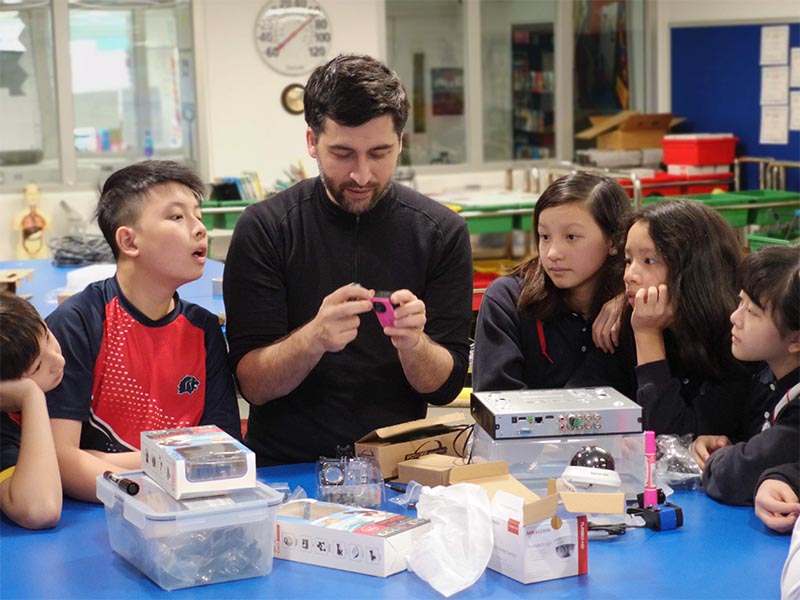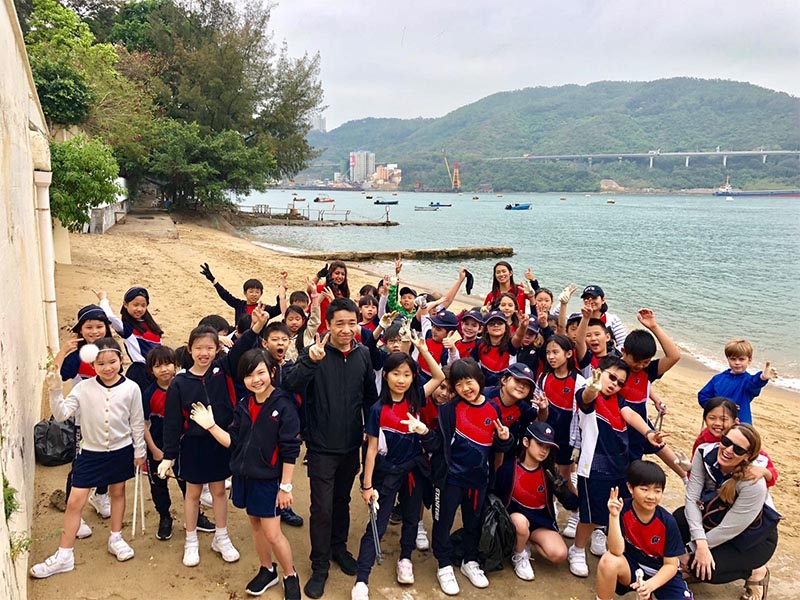School is a different place these days. Climate change and sustainability are hot topics in classrooms. Our kids are concerned about their planet and committed to helping create a better future. At leading schools, not only are today’s students learning how to think critically, they’re applying their learning in practical ways – like solving real-world sustainability problems.
A great example of this is happening at Stamford American School Hong Kong (Stamford). Next month, the school’s STEMinn program will drive a two-day event dedicated to sustainability. In the event, named “Sustainable Stamford”, students will be involved in workshops facilitated by experts, there’ll be specialist teacher team-led activities, and grade level students will host sustainability showcases.
“Sustainable Stamford will see students engaging in authentic, inquiry-based projects related to sustainability. Each grade level will focus on topics most relevant to their curricular content,” says LINDA CHEUNG, Stamford’s STEMInn coordinator. “The aim is to help students discover ways to incorporate sustainability habits into our school’s daily routine. We also aim to inspire students to take action at home or in their local community. This is a highly relevant topic in densely populated Hong Kong.”

Sustainable Stamford
Sustainability and climate change are affecting us all, and as the school points out, involving future leaders now in the solution is critical not only as a rich learning opportunity but a chance to ensure a better future for us all.
So, what will these kids actually do during Sustainable Stamford? Students will be getting their hands dirty while composting and learning more about mealworm farming. Budding fashionistas will be transforming rubbish into high fashion and performing in a showcase for parents and students. Others will be participating in real-world initiatives that positively impact our community here in Hong Kong. To help leave the city a cleaner place, Stamford students will conduct a series of beach cleanups, followed by workshops on how to repurpose plastics. Most importantly, they’ll learn how we can reduce the use of these plastics.
Building green vehicles
As they get older, the activities for Stamford students just seem to get cooler and cooler. “Our upper elementary students and middle school will use their innovative skills and knowledge to build solar cars and remotely operated underwater vehicles using sustainable materials. These smart vehicles will use AI to gather data that tracks garbage in the ocean,” says Linda. It’s enough to make even the most hardened parent want to go back to school!
This is a great example of the school’s application of Design Thinking methodologies, which falls as part of Stamford’s STEMinn program – where innovation is married with STEM experiences. The students will follow the four Design Thinking steps – Imagine, Design, Create, Evaluate – to transform their ideas into practical solutions.
Looking forward, one way Stamford hopes to see involvement from a larger number of schools is to focus on the UN Sustainable Developments Goals (SDGs). The Grade 5 group is currently working on an initiative around this. These students have chosen a single goal to focus on; next, they’ll develop an action plan of change they can affect.
Linda is excited about the upcoming event. “We have so many great ideas for Sustainable Stamford – we’re talking about everything from vertical gardening and meal-worm hives, to detergent-making from fruit enzymes, art murals from plastic waste, a recycling relay, pencil cases from tetrapaks, solar car building, plastic repurposing, sustainable wearables, debris detecting ROVs. So many possibilities. It’s a big venture that includes our whole school!”

Creating sustainable energy sources
Stamford is no novice to linking its STEMinn program to real-world problems. A great example of this happened last year when students participated in an initiative dubbed “Light Up Learning”. The project focused on energy poverty and sustainable energy sources. They not only learnt about energy poverty, but worked to develop a sustainable energy source to help those affected. The students constructed, and then donated, solar lights to those struggling with energy poverty in Papua New Guinea. “This hands-on activity drove home the impact of not having energy and the need to find better ways of providing energy,” explains Linda.
A Cognita-wide event, Light Up Learning happened again this March, timed to align with WWF’s Earth Hour. With STEMinn education and the opportunities for creativity and science to make significant impacts, who knows what the future holds for these young changemakers?
Stamford American School Hong Kong is at 25 Man Fuk Road, Ho Man Tin
2500 8688 | sais.edu.hk
See more in our Schools section:
How to help our teens when they struggle
The link between wellbeing and academic success
Top things to do and places to visit in Hong Kong





